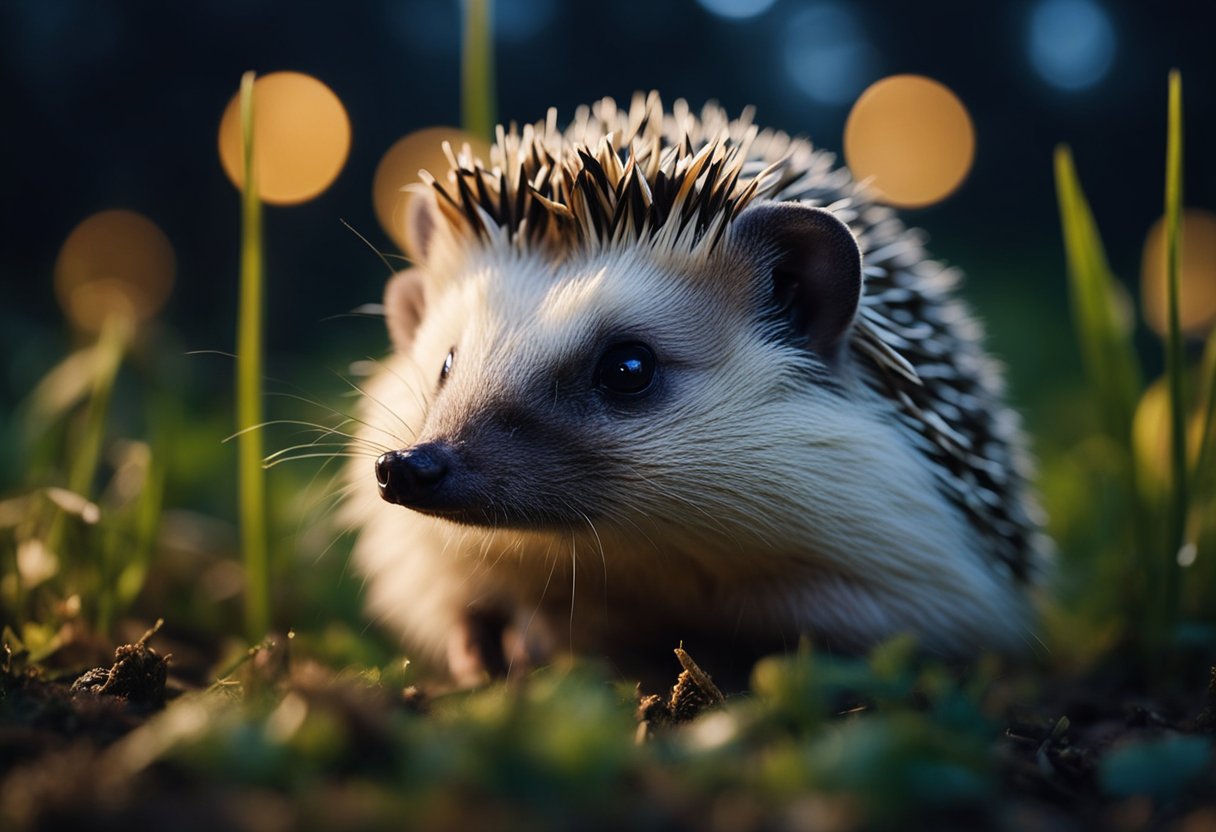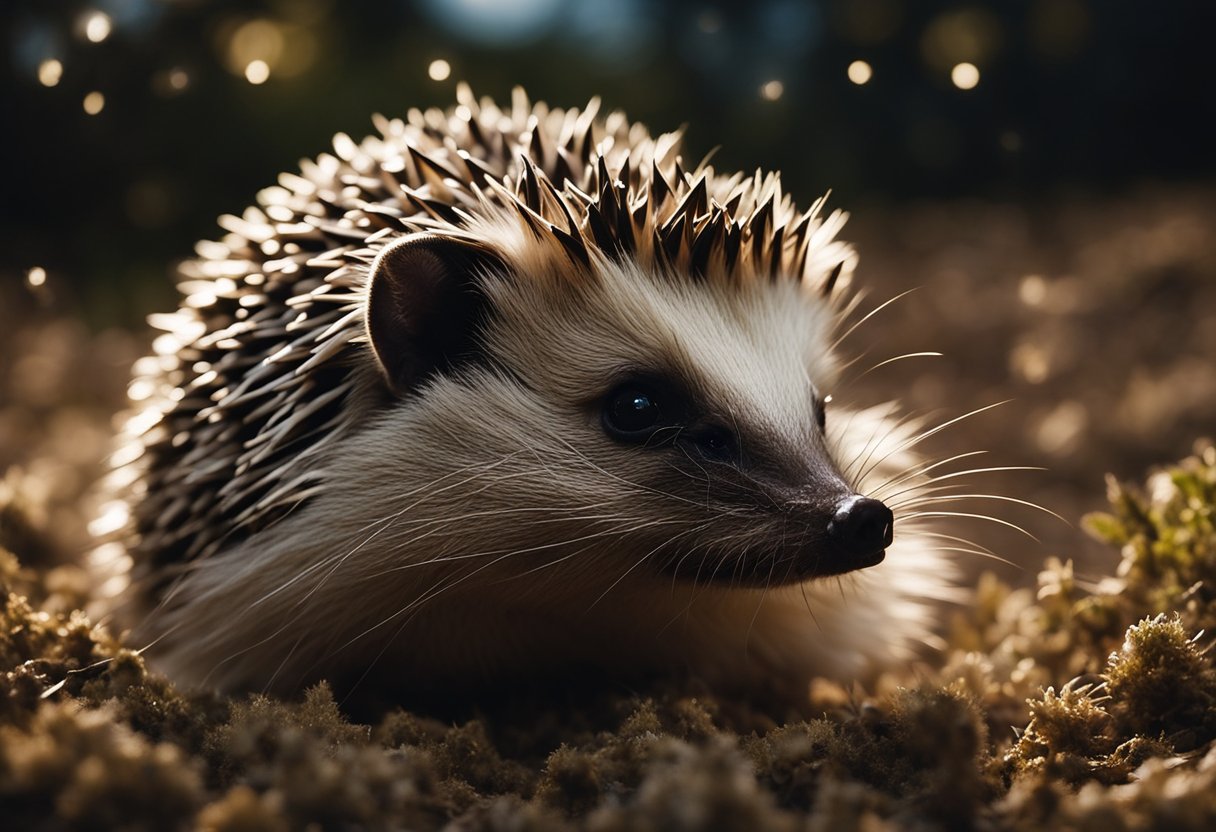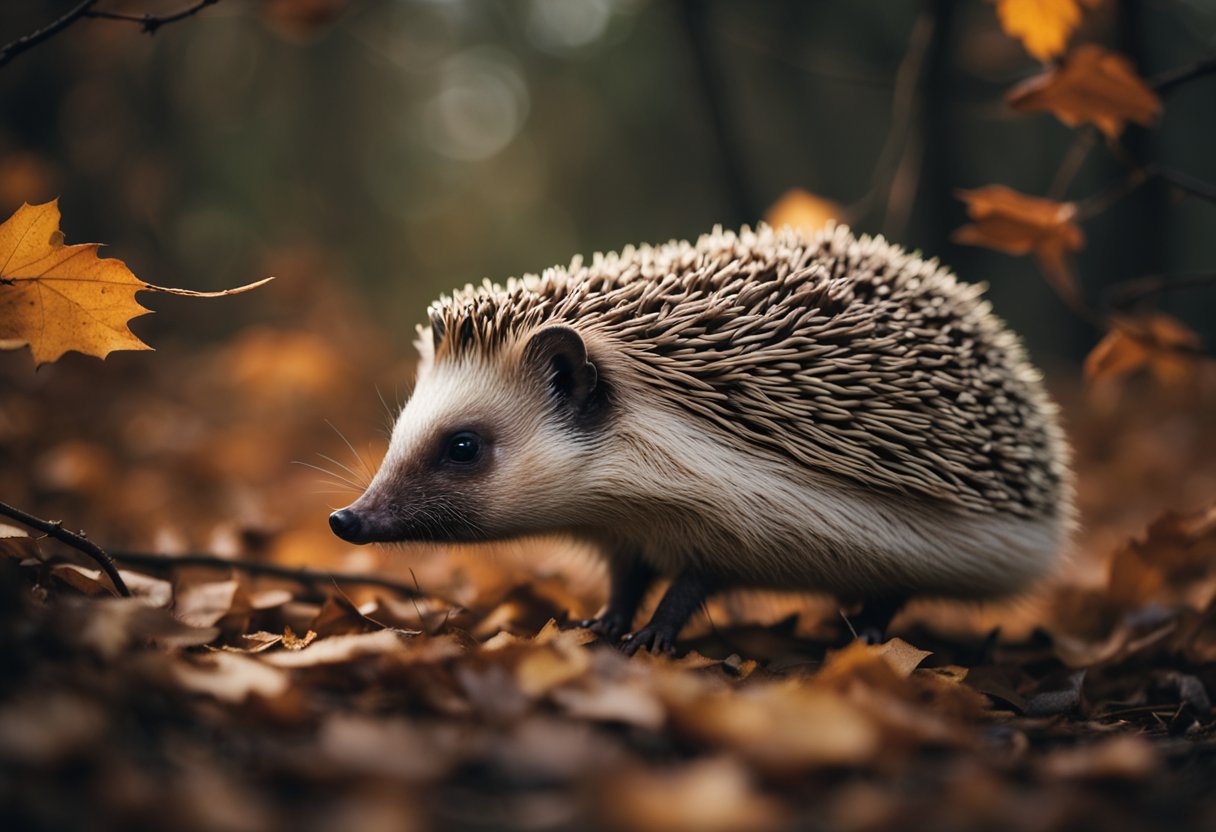Hedgehogs are small, spiny mammals known for their distinctive appearance and unique habits. As part of their lifestyle, these fascinating creatures are primarily nocturnal, meaning they are mostly active during the night and sleep during the day. However, it’s not uncommon for some species to also engage in activities during daytime hours, particularly following light rainfall.
Their nocturnal habits have led them to adapt and evolve, relying on their senses to move around and find food in the dark. These endearing animals mostly feed on insects, but their diet can also include small mice, snails, lizards, frogs, eggs, and even snakes.
Hedgehogs are known to be solitary creatures, staying active during dim light or after sunset, which gives them an advantage when it comes to hunting and avoiding predators.

Key Takeaways
- Hedgehogs are primarily nocturnal animals that may also be active during daytime hours
- They rely on their senses to navigate and find food in the dark
- Hedgehog lifestyle and environment influence their unique adaptations for nocturnal living.
Nocturnal Habits of Hedgehogs
Hedgehogs are fascinating creatures known for their unique appearance and nocturnal habits. They are primarily active during nighttime hours, and they sleep throughout the day. As nocturnal creatures, hedgehogs have developed specific adaptations to help them thrive in low-light conditions.
Their senses of hearing and smell are highly developed, allowing them to locate insects, their primary food source. Eyesight plays a vital role in their ability to navigate in dim light. Hedgehogs have specially adapted eyes that can detect even the faintest of light, making their night-time forays easier and more efficient.
The sleep patterns of hedgehogs are influenced by their natural habitat and the need to save energy. Hibernation is a significant aspect of their sleep behavior during colder months. As their body temperature drops, they enter a state of deep sleep to conserve energy. This period of rest may last several weeks to months, depending on the climatic conditions in their habitat.

Hedgehogs are solitary animals that prefer to live independently. Their nocturnal lifestyle further supports this fact, as they spend the majority of the daylight hours resting in a secluded spot. Once the sun sets, these insectivores begin their daily activity, searching for food and possibly looking for mates.
The nocturnal habits of hedgehogs serve several purposes, including avoiding predators and enhancing their ability to hunt insects. Here’s a quick summary of the main reasons behind hedgehogs’ nocturnal behavior:
- Safety: Nighttime activity keeps them hidden from many predators.
- Food: Insects are more active during the night, making them easier to catch.
- Temperature: Hedgehogs prefer cooler temperatures, which are more common at night.
- Solitude: Their solitary nature is supported by their preference for nighttime activity.
Careful observation of hedgehogs’ nocturnal habits can provide valuable insights into their unique behavior and adaptations. It is essential to be aware of these habits, particularly for individuals who keep hedgehogs as pets, to ensure their well-being and proper care.
Hedgehog Lifestyle and Environment

Hedgehogs are small, spiny mammals belonging to the family Erinaceidae, and they can be found across Europe, Asia, and Africa. They are primarily nocturnal creatures, which means they are active during the night and sleep during the day. Hedgehogs have highly developed senses of hearing, smell, and specially-adapted eyesight to help them navigate in the dark.
Hedgehogs have a diverse diet, making them omnivorous animals. Their food sources include insects, worms, snails, frogs, eggs, and even small snakes. Additionally, they sometimes consume fruits and roots. Hedgehogs use their strong sense of smell to locate food while foraging at night.
In the wild, hedgehogs are known to inhabit a wide range of environments, from suburban gardens to forests and scrublands. They are adaptable to various habitats and can be found across Eurasia, India, and even introduced in New Zealand. When it comes to making nests, hedgehogs often use natural materials such as leaves and grass to create a cozy space, either in burrows or hidden spots like under bushes.
The hedgehog’s spines, made of keratin and resembling those of porcupines, provide vital protection from predators. Some of the common predators of hedgehogs include birds of prey like owls, as well as larger mammals like foxes. When threatened, a hedgehog will roll itself into a tight ball, presenting its spines outward to deter the predator.
There are various species of hedgehogs, such as the European hedgehog (Erinaceus europaeus) and the African pygmy hedgehog (Atelerix albiventris), which are the most common ones kept as pets. The African pygmy hedgehog, for example, has a weight range of around 250-700 grams and a body length of 14 to 30 cm, with a small tail measuring 1 to 6 cm.
As pets, hedgehogs require a well-maintained environment and proper care to thrive. They need a spacious enclosure, equipped with hiding spots, nesting materials, and a balanced diet. Providing a shallow water dish for them to drink and occasionally swim in is also essential for their well-being. As nocturnal animals, hedgehogs need a consistent routine, with daily exercise, and limited exposure to bright light during their sleeping hours.
In conclusion, understanding the lifestyle and environment of hedgehogs is crucial for those who have them as pets or are interested in their conservation and well-being. These adorable creatures have unique features, such as their spines, nocturnal habits, and diverse diet that make them a fascinating addition to the animal kingdom.




Leave a Reply